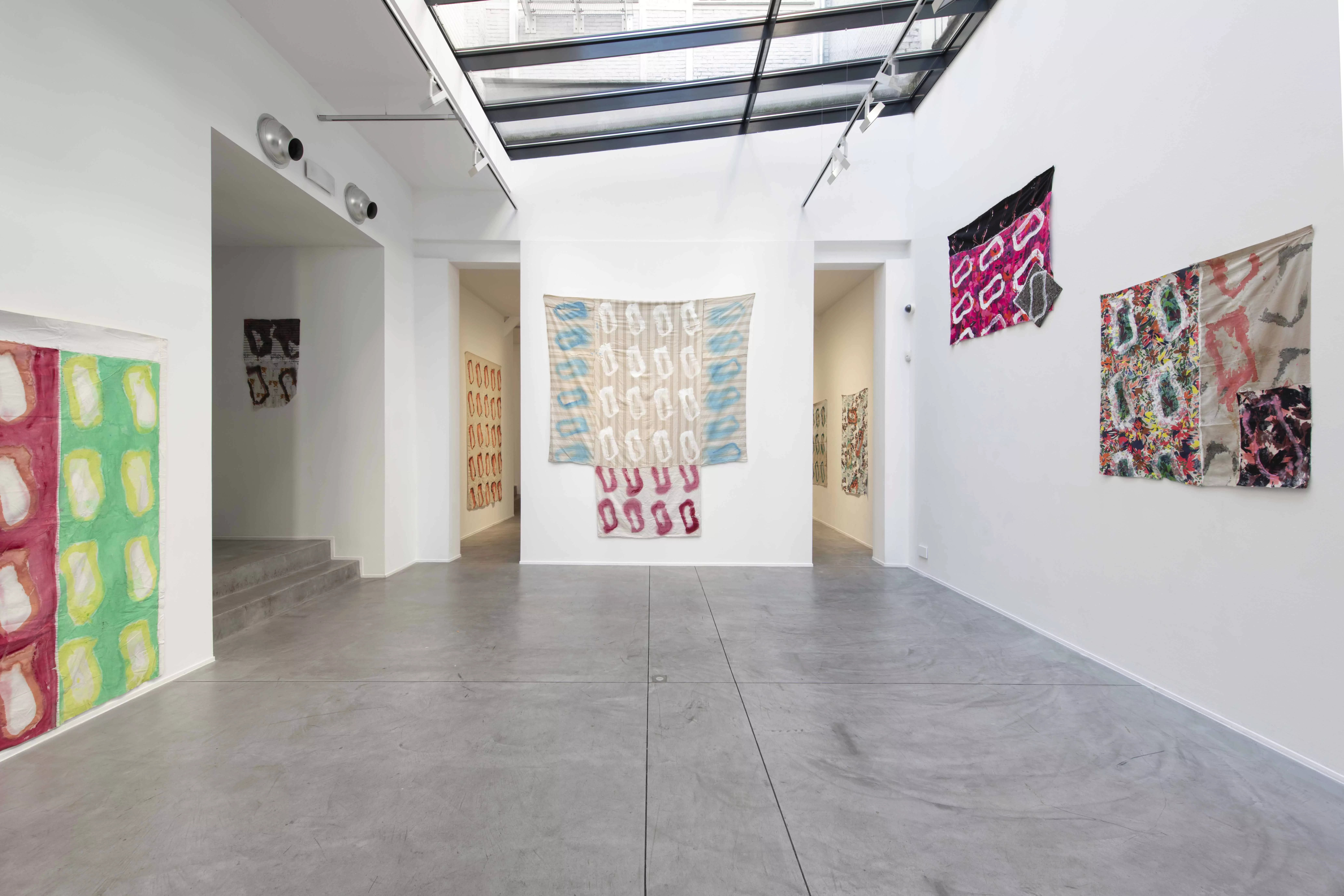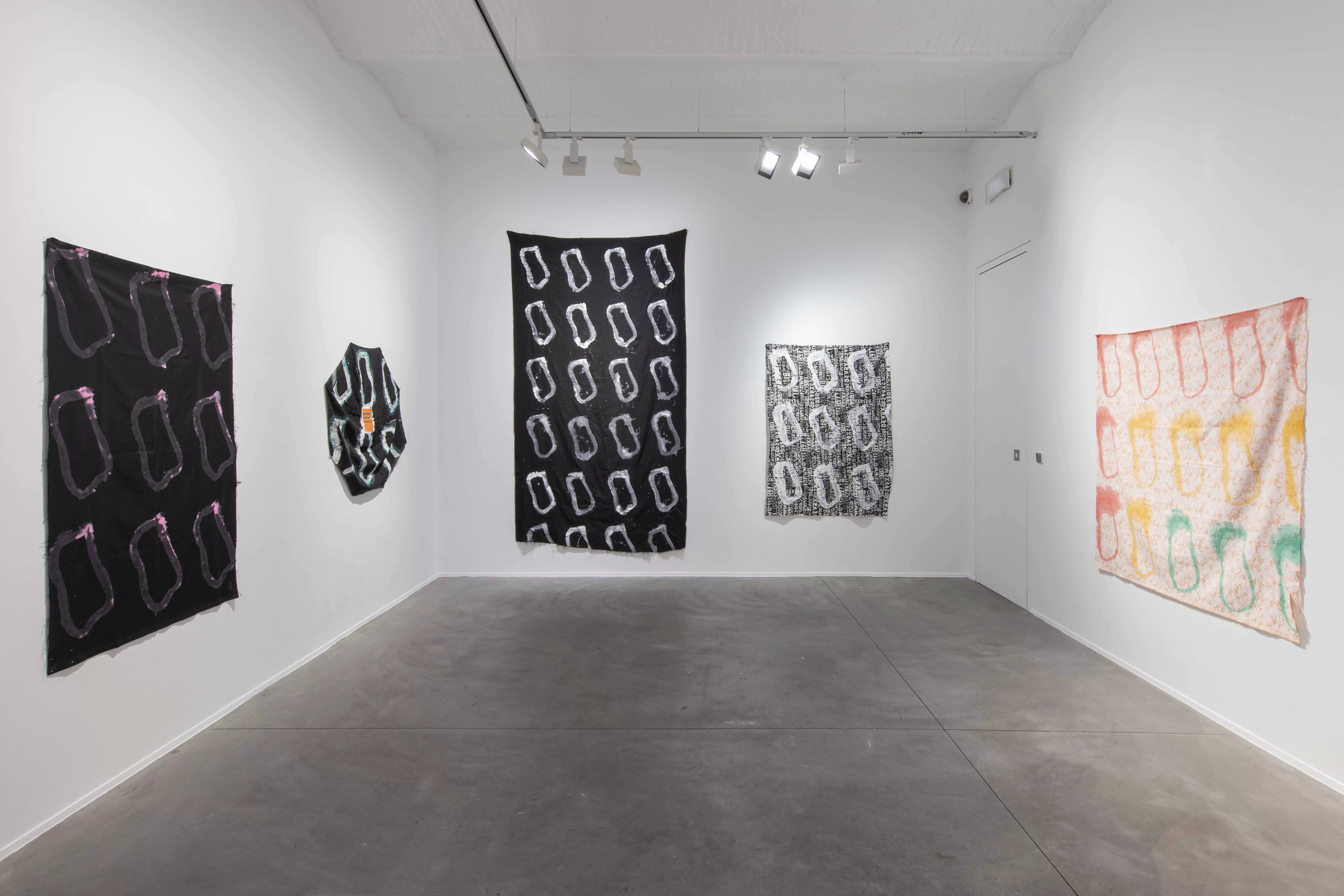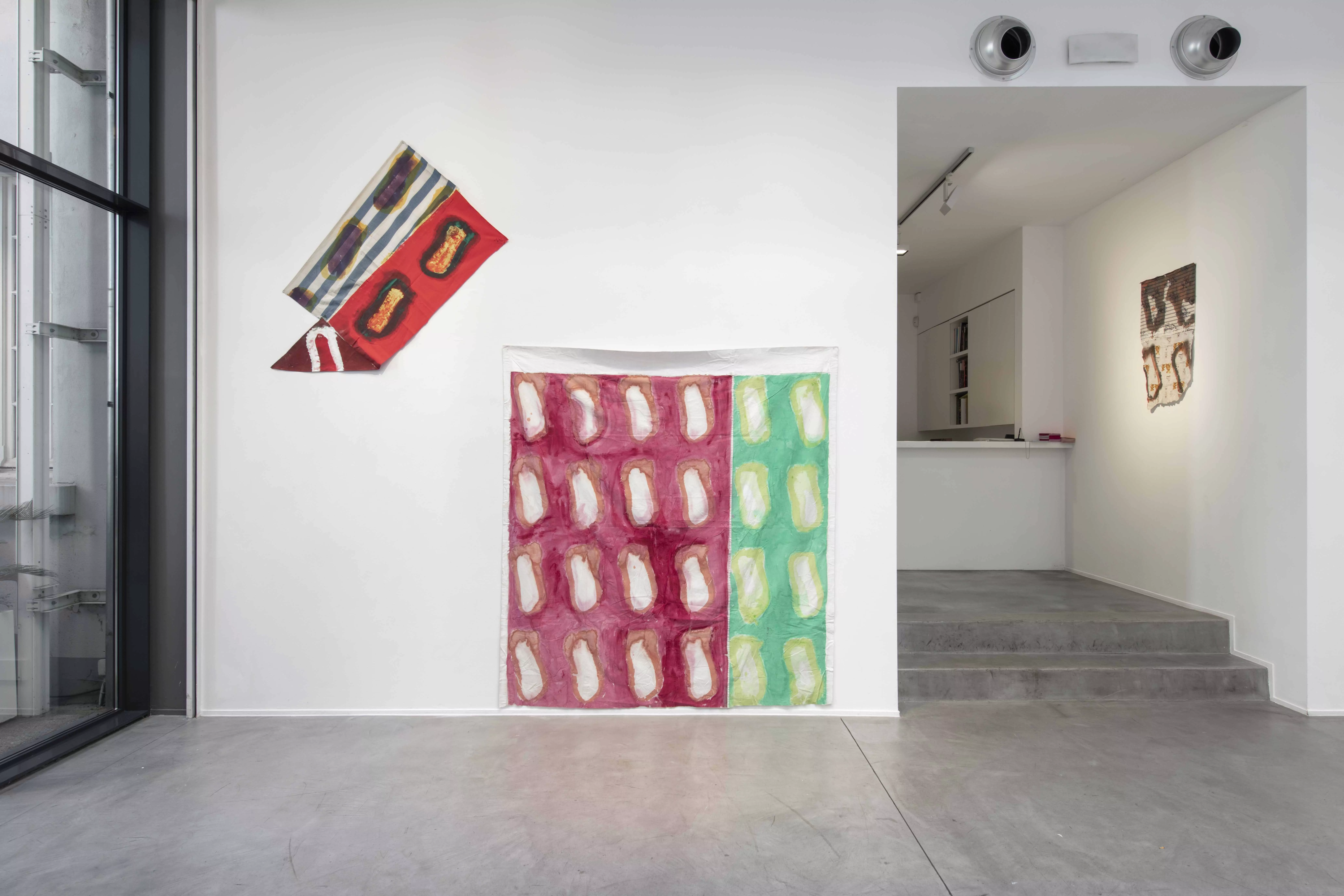
Claude Viallat
A Couple of Sidesteps
With this new exhibition, carefully installed by Claude Viallat himself, the artist unveils a handful of his latest experiments.
In a number of works, the shape, rather than being repeated as an endless sequence, is diluted to the point where it forms large spots of watery colors. In other pieces, it is outlined with dripped paint, suggesting a contrasting image of calligraphy.
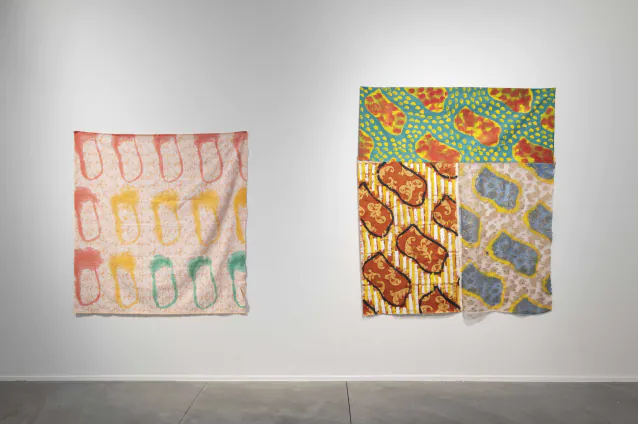


87-year-old French artist Claude Viallat is taking “a couple of sidesteps” to reveal a series of new paintings created between 2022 and 2023 at the Galerie Templon Brussels space.
A founder and leading member of the Supports/Surfaces group in the 1970s, Claude Viallat has spent the last 50 years exploring the limits of abstract painting through variations around his signature “shape” – a small bone form – reproduced on a wide variety of fabrics and tarpaulins, hung unmounted and unimpeded in space.
The use of multi-coloured fabrics offers him the opportunity to introduce new hues: a deep ruby canvas rubs shoulders with a soft mauve or platinum grey piece. In Viallat’s work, the palette always chooses itself: “I am an instrument,” he explains. “The work has a life of its own. I only have to concern myself with the result.”
Another constant feature of the artist’s approach is that the exhibition layout is almost a work of art in itself. The artist delights in juxtaposing canvases, mixing up surprising textures and patterns. He uses this ever-innovative game of contrasts to reveal an audacious and intuitive dialogue between volume and surface, accumulation and void.
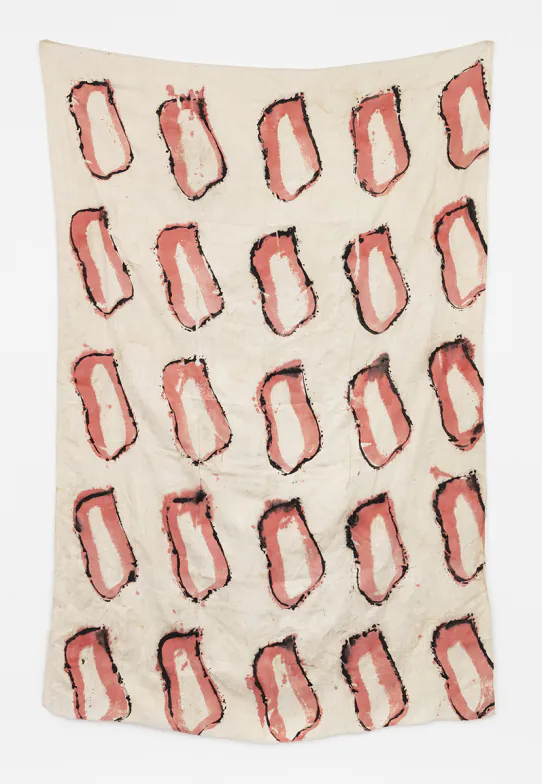
Sans titre n°217, 2023

The artist

Claude Viallat was born in 1936 in Nimes, France, where he continues to live and work. He is one of the founders of the Supports/Surfaces movement in the 1970s, which called for art to renew itself through a deconstruction of traditional materials. Viallat started to work on industrial tarp, endlessly repeating the same abstract pattern, resembling a small bone, which became his signature. Stencilled repeatedly onto a range of supports, the pattern asks us to reflect on the meaning of the creative act and the status of the work of art.

